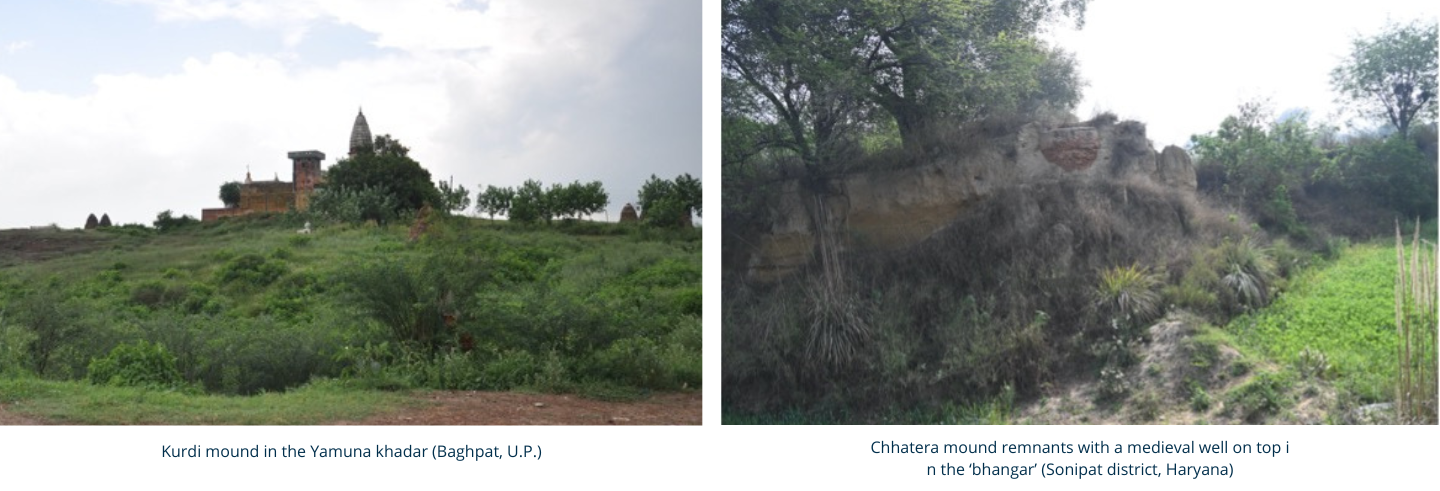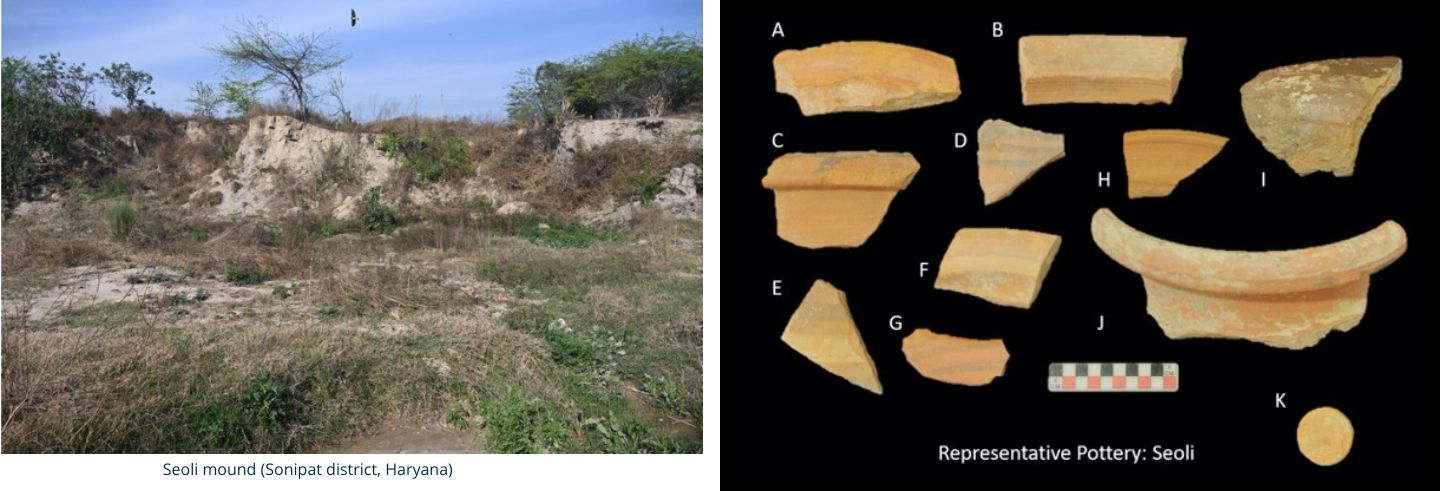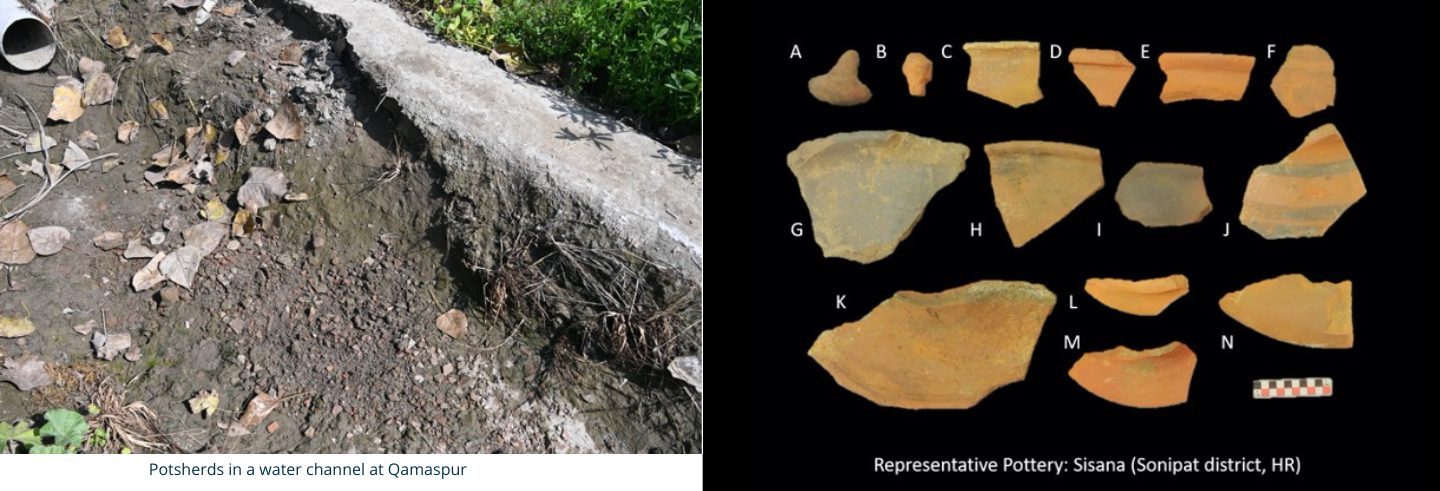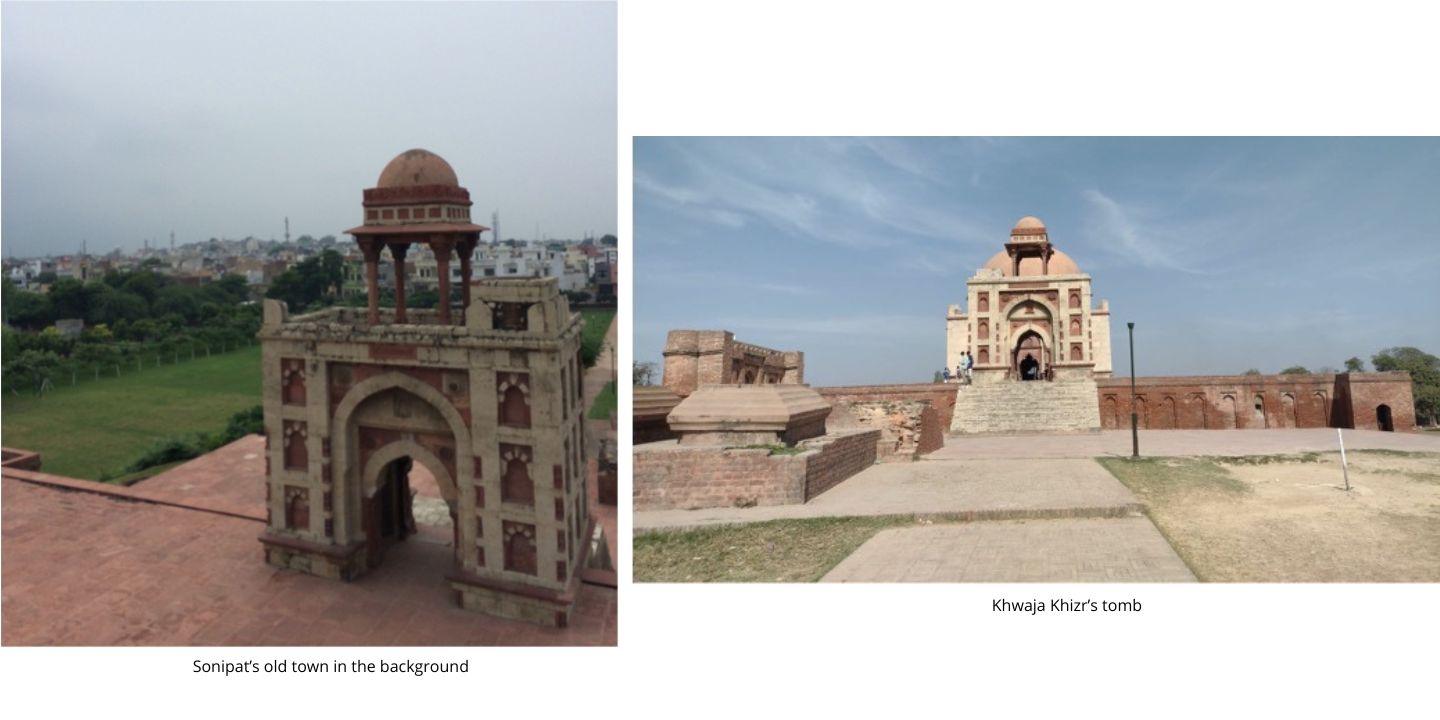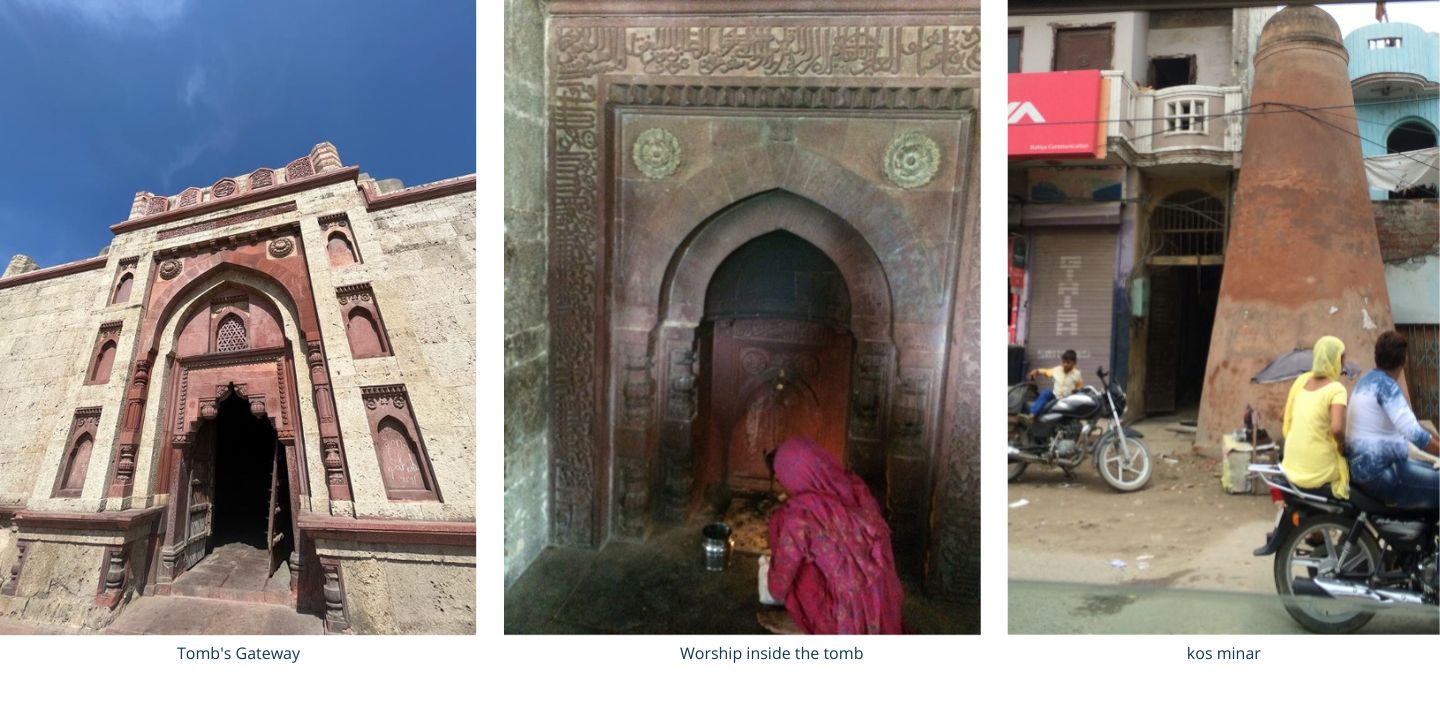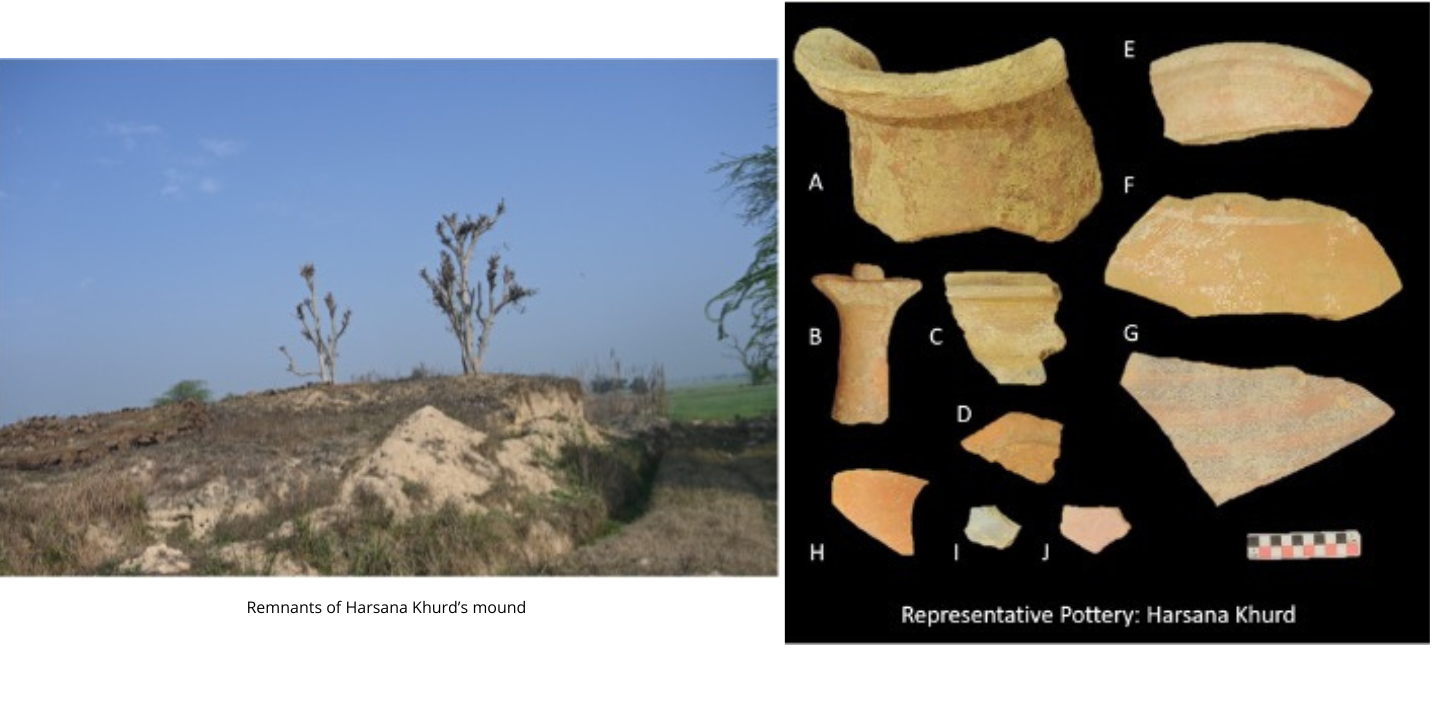Crossing the Yamuna river
If the mound in Sonipat district’s Sisana no longer exists, another Sisana in Baghpat district has fared much better. This Sisana is some ten kilometres from Ashoka University, and not far from the Yamuna river. Today, the river is some two kilometres from there, but it is likely to have been much closer to it in ancient times. Like Seoli, the site is located on the top of a 10 m high natural elevation. This could be either riverine or aeolian and has been cut up in various places to create arable land. Many parts, though, are still preserved and visible as high grounds fringing the fields. Calcrete concretions are occasionally visible in the mound areas, with evidence of collapse and talus in the exposed section profiles.
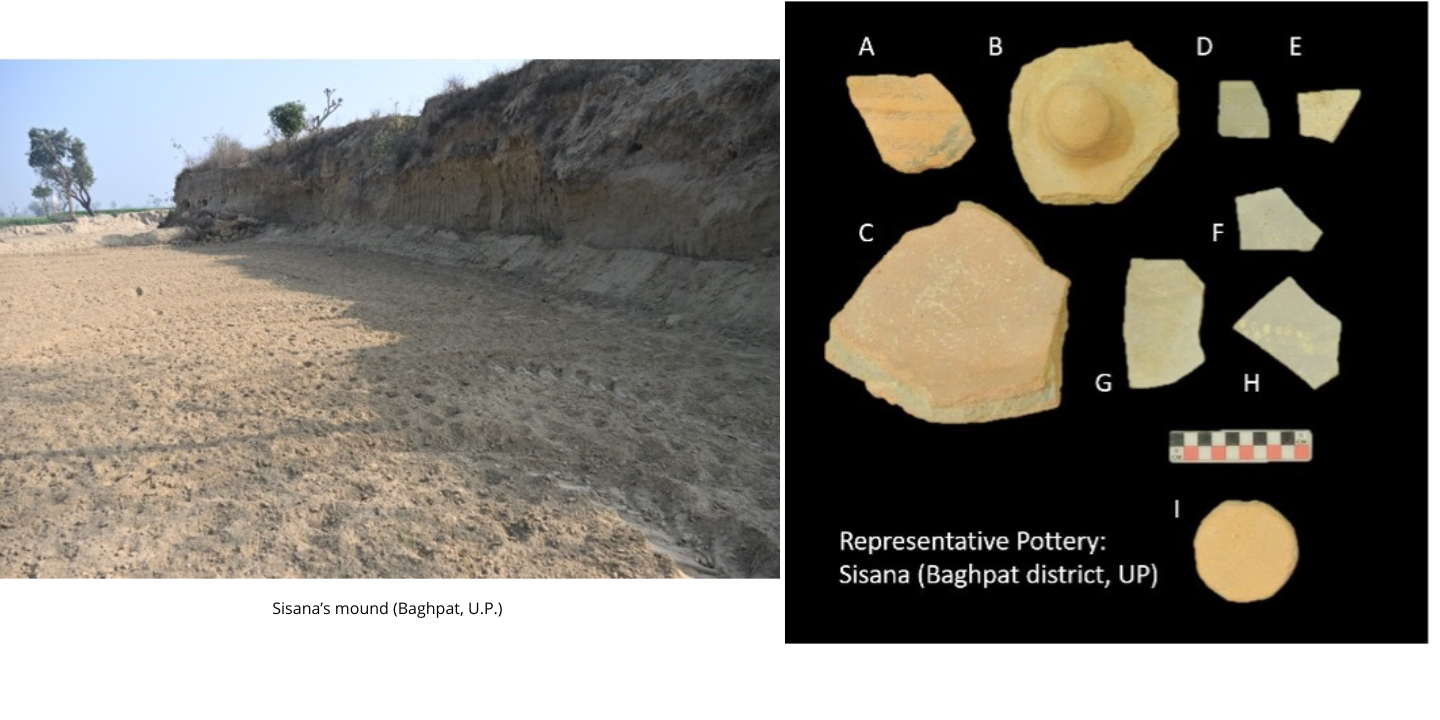
The southern part of the surviving mound had more significant pottery scatters with grey ware, red ware and black-slipped ware. Much of this would go back to the first millennium BCE when grey pottery was common. The typical pottery which allows grey wares to be securely placed in the early first millennium BCE is marked by paintings (and, is thus, appropriately called painted grey ware). Some fragments have been found at Sisana.
At Kurdi, two kilometres from the eastern bank of the Yamuna, such painted pottery fragments in significant quantity can be observed. The Kurdi mound is high and fairly intact, standing some 15 m above the surrounding plains. Because of the presence of a Shiva temple, its local name is Shiva Mandir Tila. The painted grey ware can be seen quite commonly in the lower part of the mound, with fragments marked by linear patterns in black. There was also red ware, grey ware, black slipped ware, corded ware and a red pottery that is usually found in historic times. Bricks too (of the early centuries CE) lie scattered in some rain gullies that feed into a seasonal stream in its vicinity.
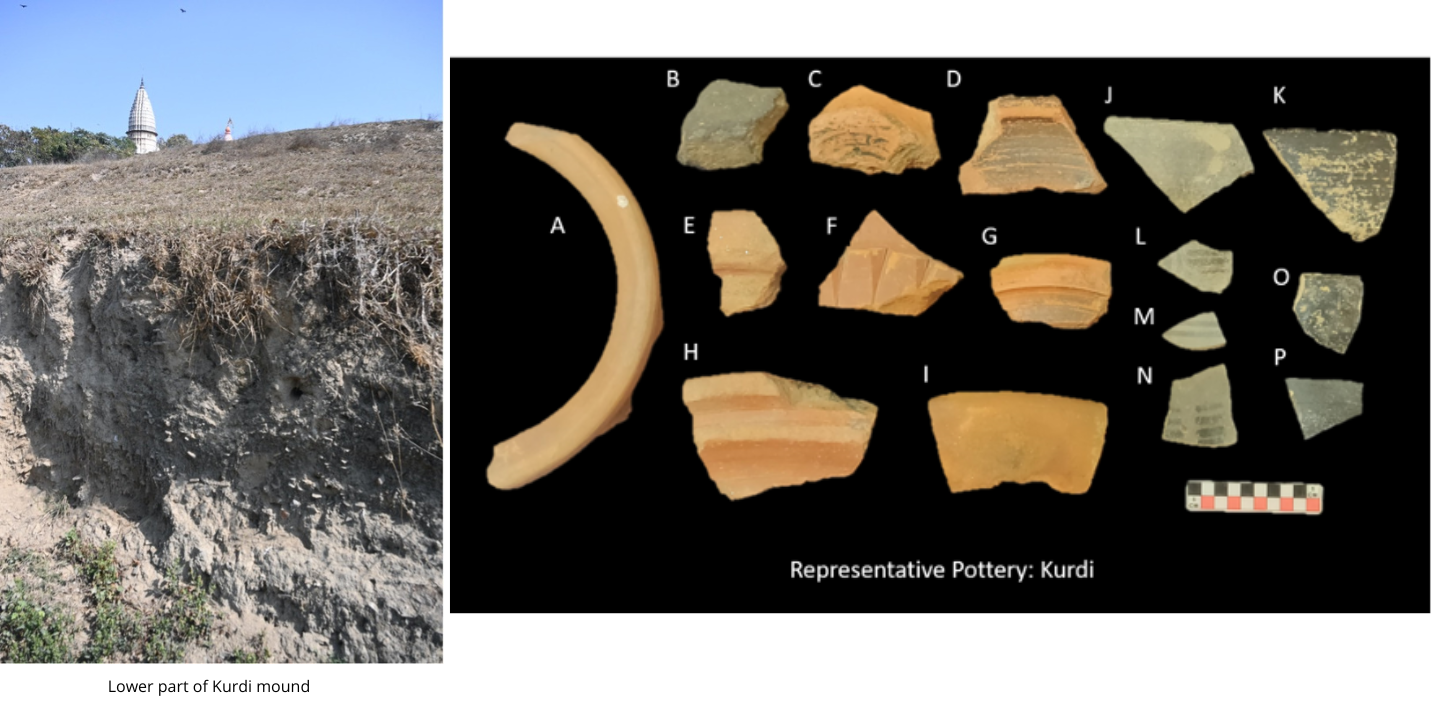
Considering that this is not far from Sinauli where excavations conducted by the ASI yielded spectacular second millennium BCE remains (including those of a chariot), it is possible that there are cultural remains below the painted grey ware deposit here. Only a trial excavation here would be able to settle this but as things stand, this is a mound where a palimpsest of cultures in layers – from the ancient to the medieval – is most likely to be uncovered.
How has the Yamuna river changed over the centuries? How did the elevations in the alluvial plains where sites are often located get created? What are the other fields and fallows in this belt that bear markers of settlements that have disappeared?2 These are questions that will be taken up in the future. Hopefully, what has been set out here provides some glimmerings of the rich history that lies scattered in the surroundings of Ashoka university.

Location of archaeological sites investigated during the course of reconnaissance fieldwork in February 2023





